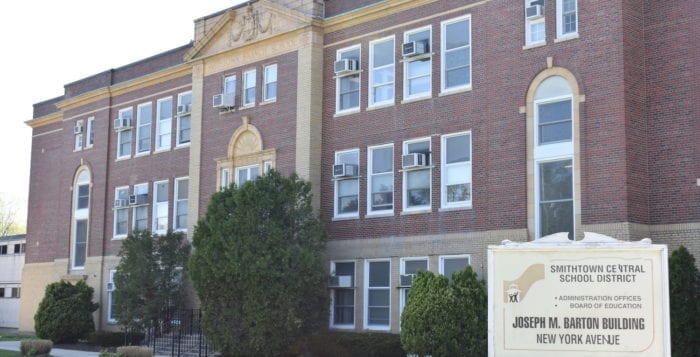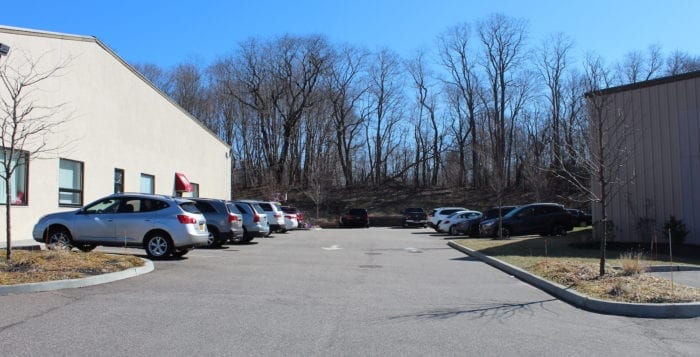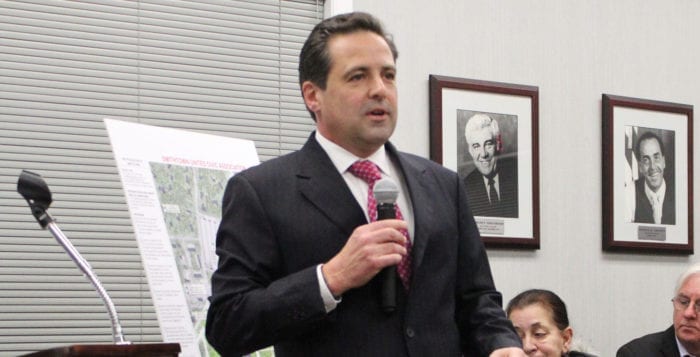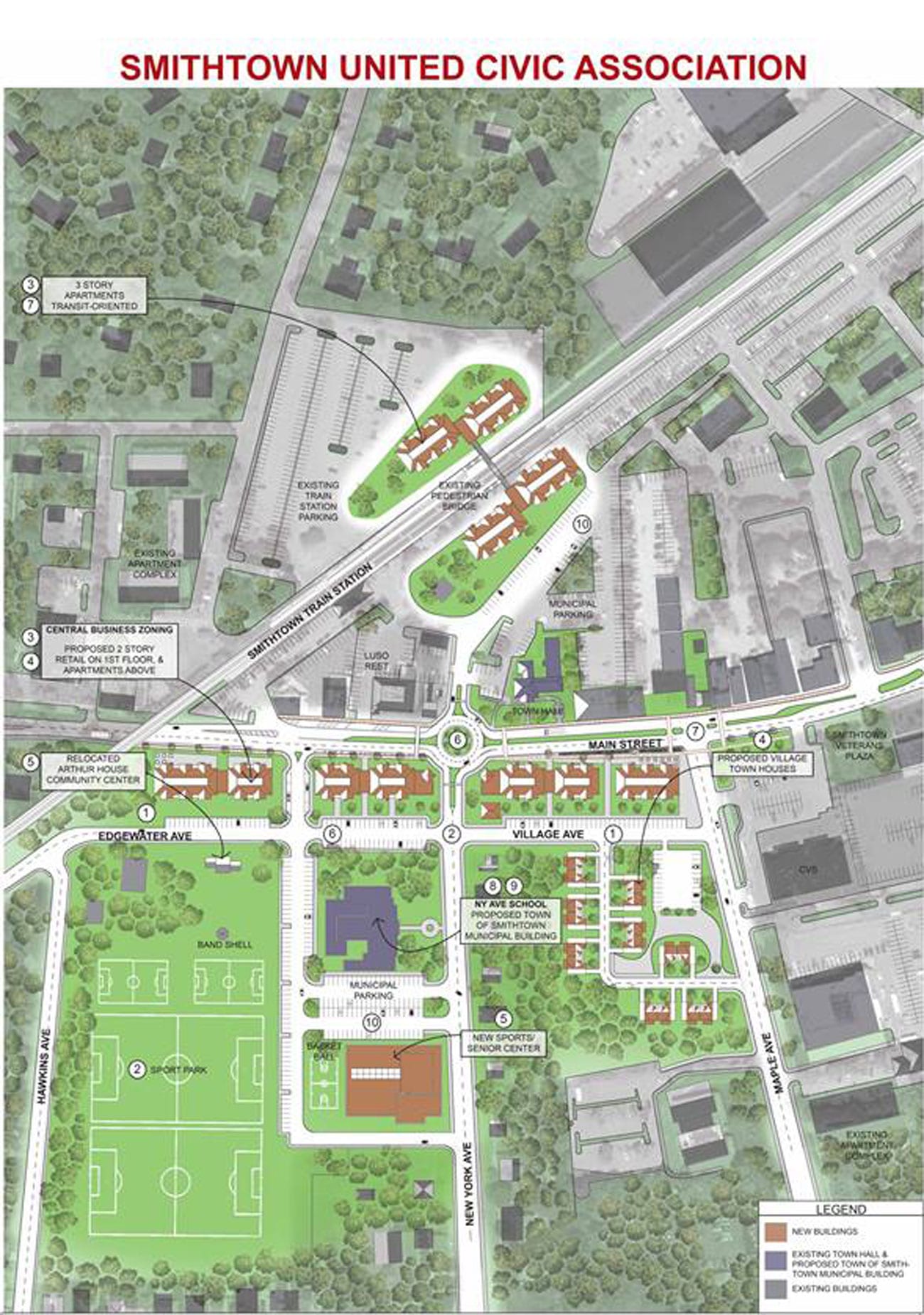By Tim Small
The Town of Smithtown has begun efforts to expand its town hall. Specifically, conceptual plans are being developed to add wings to the existing building. Most recently, the town sought appraisals for four satellite, or annexed, buildings as a first step in consolidation. No doubt consolidation of office space will increase efficiency and improve external user’s interaction (regarding “one stop” vs. being shuffled from one building to another). A vacated annexed building can consequently be used for redevelopment (e.g., further redevelopment of old Nassau Suffolk Lumber property), transit-oriented development (e.g., Long Island Rail Road adjacent apartments) or parking.
The Smithtown United Civic Association supports efforts and has advocated for consolidation and resulting efficiency for some time, but expansion of the existing town hall is not the only option. Specifically, utilization of the existing New York Avenue School must be formally explored. Proper business cases must be developed, become completely transparent and the best option for Town of Smithtown taxpayers (e.g., town vs. school tax) selected.
The Smithtown school district can function without the New York Avenue School building, as best evidenced by its recent attempt to sell the property. Not much has changed, except the school board membership. The school district had only informal discussions with the then town leadership, and as legend goes, was told to seek dense redevelopment. The bid by Southern Land Development was met with very strong opposition, forcing it to withdraw its bid offering. Leadership was embarrassed, in a he said, she said situation between town leadership and the school district. Consequently, no trust and no open communication has subsequently transpired, only legal posturing.
Clearly, an opportunity for the school district to reduce operating expenses exists, especially valuable during times of declining enrollment, increased labor costs, reduced state aid and increasing taxes. Yes, school district relocation costs must be understood and properly funded in the process. Clearly, an opportunity for town consolidation exists, arguably enabling redevelopment and launching the long overdue downtown revitalization. Yes, the New York Avenue building needs some remediation work, but let’s not lose sight of the fact that people are currently occupying the building. We need to call upon our elected officials and school board to seriously consider this option.
The school building, also known as the Joseph M. Barton building, sits on 13 acres, was built in 1924, and is about 76,000 square feet in size. It was built as a secondary school, used as a junior high school and became the district’s administrative offices in 1986. Today it serves its function as the district’s central office, adult education programs and board of education meetings. The site also includes athletic fields used by many, such as the Smithtown Kickers Soccer Club. The grounds are the last available green space within the downtown business district. It sure seems like a great opportunity exists to repurpose this historic building, while preserving open green space.
The concept of a town buying a school building is not new to Long Island. We need only to look to our neighbors in the towns of Huntington, Islip or Babylon. As an example, the Huntington Union Free School District sold its building on Main Street in 1978 to the Town of Huntington for $1.
Before moving forward we need transparent business cases developed for each option so that the right decision for a Town of Smithtown taxpayer is selected. We need to hold all of our elected officials accountable. The Smithtown United Civic Association is committed to creating the necessary visibility, driving accountability and facilitating the necessary dialogue. Maybe we need to start by getting everyone in the same room. Any objection from either town or school board?
We live in a wonderful community. We love our schools, local businesses and our beautiful homes. Please help and show support by attending town board meetings. If you can’t go, call or write our council members and let them know you share the Smithtown United Civic Association vision. We need to explore the New York Avenue School purchase and preservation of the last available green space in downtown Smithtown. Together let’s make Smithtown an even better place to live.
Tim Small is president of the Smithtown United Civic Association.









